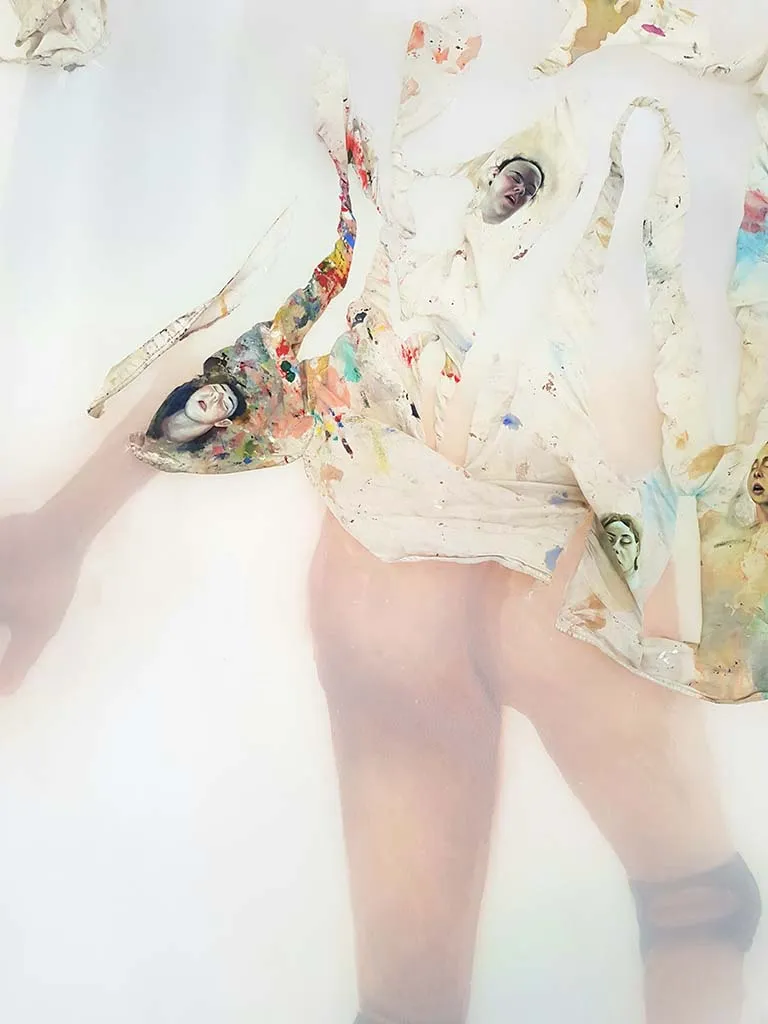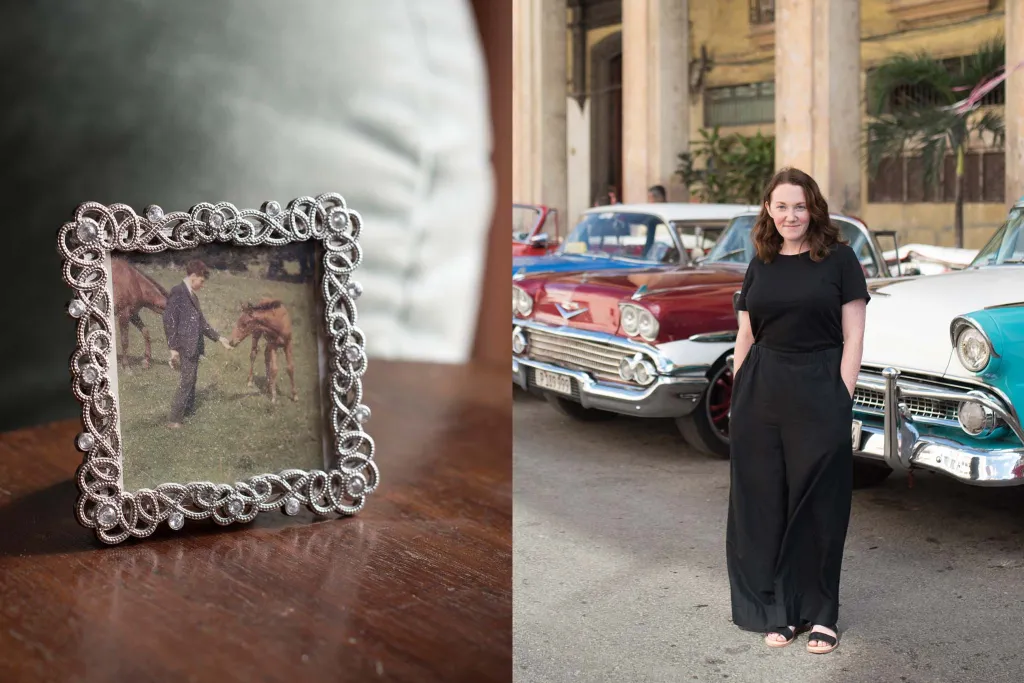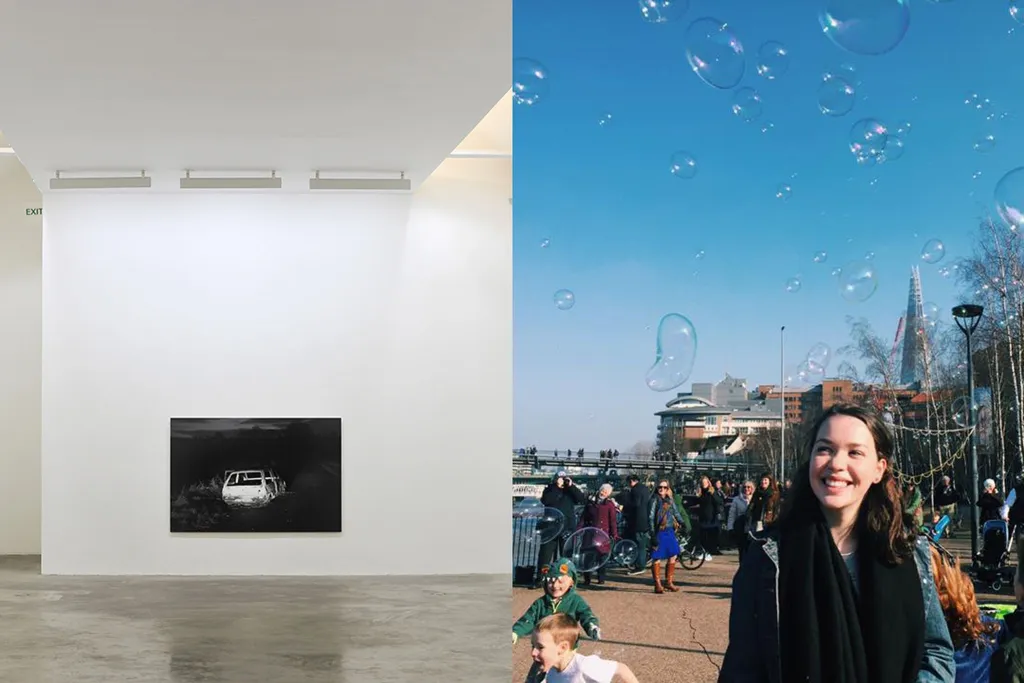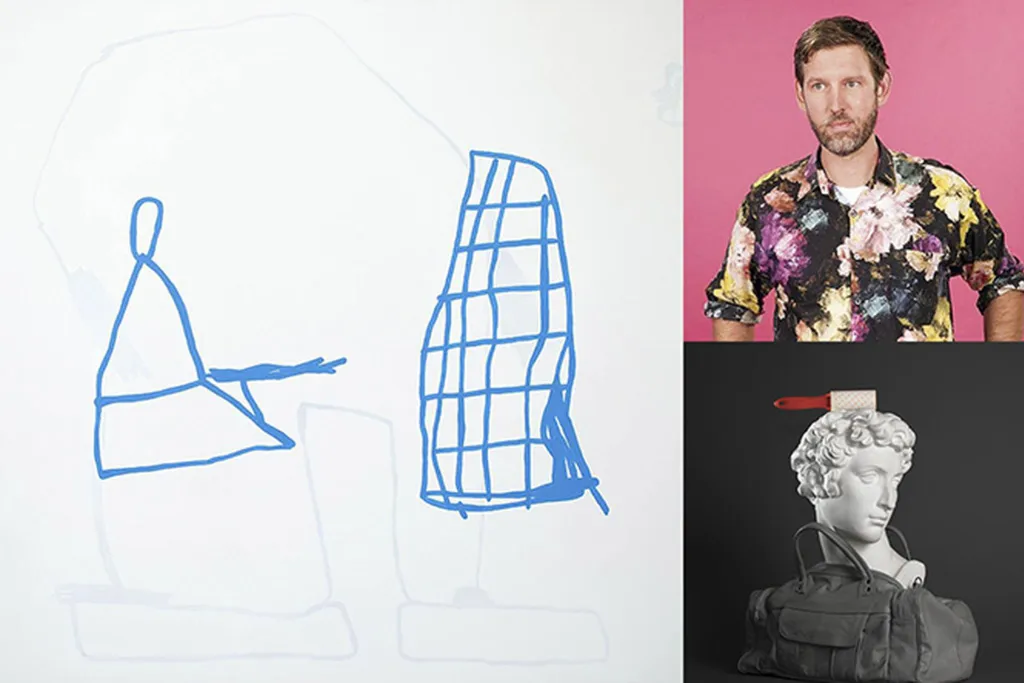Mathilde Ganancia

Community update with Mathilde Ganancia
We first met Mathilde Ganancia in 2014 as one of five artists for our autumn residency that year. Since then, Mathilde has returned several times for both shorter residencies and to teach during our summer art program Art on the Farm. It is a genuine pleasure anytime she returns, most recently this past February. In addition to her work as an artist, she is a dedicated educator, now teaching in both the BA and MA departments at TALM-le Mans. We’re grateful that Mathilde has taken some time to answer our questions.
Mathilde has provided a few installation shots of a recent exhibition titled In summer we make them icy at Parc Saint-Léger contemporary art center, Pougues-les-Eaux, France in collaboration with computer music designer and musician Jérôme Nika. These images seem particularly fitting as the shirt used in the panting belonged to Co-Director Frank Abruzzese. It had been used as a smock for years before Mathilde decided to paint on it. Furthermore, in the painting there is a depiction of Cow House chef Caitriona Foley sleeping.
Image credits: You are wondering if, deep down, you are still visible to the naked eye? Oil on blouse, oil on tarpaulin, print on fabric, 250 x 140 cm, 2020. Photography by Leo Louis Woo.
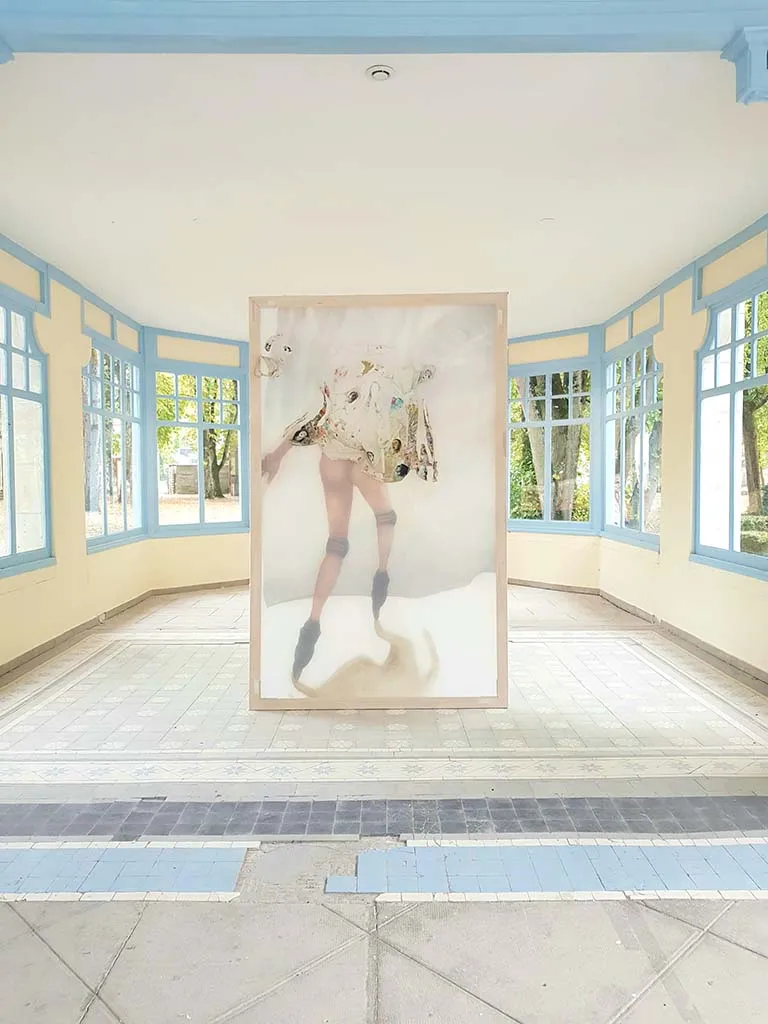
CHS: Your work seems to oscillate between working with specific ideas and following intuition; can you talk about your working methods as a painter? What drives your curiosity?
MG: Absolutely. I have been very influenced by the surrealists and the poetics of the found object. My starting point usually comes from a fragment of a sentence or a found material I’m not familiar with that pops into my world. I then move back and forth between a pure desire to experiment with this material and moments where I step back to see and construct a story from it, using words and figuration.
What drives my work is the desire to create new possibilities, to discover a new visual world and logic in each painting.
CHS: Who and what are some of your biggest influences? What do you research as you begin a project or body of work?
MG: I look at all kinds of artists who research through forms. There are so many paintings nowadays, and so many beautiful ones, with perfect combinations of shapes and colors, it makes me dizzy! But the paintings I am really interested in are those that don’t satisfy me entirely, paintings that puzzle me enough to confound my certainties. This quality makes them feel very real to me. In this vein, I love how disconcerting Lee Lozano’s paintings are in relation to her writings and performances. I am also really into the highly mastered paintings of Tala Madani, where scenes and constructions keep questioning me. I love how Guy Mees’s paintings are both so blunt and discrete. Marx Ernst has always been a big influence for his huge variety of paintings, also surprising me with his enigmatic choices of signs and figuration. I also feel very close to how Francis Picabia blends the unglamorous and delicacy into his very generous works. I have recently been looking a lot at Amelie von Wulffen’s work and the humor that comes out of it.
Literature is also very important to nourish my visual and written work. I read a lot of contemporary authors who flirt with different forms of the absurd and burlesque, like the French authors’ Eric Chevillard and Regis Jauffret. I also often search for deep forms of realism. I’m thinking of John Steinbeck’s short stories and the disarming truthfulness that comes out of it. I am also very interested in the inventiveness of Lydia Davis’s writings.
The motor in my work often comes from the excitement of other people’s work. I research by looking at a lot of art, digging into it, and reading a lot of literature. When I start a new body of work, I usually stop all that. I gather bits of notes, writings, and drawings disseminated in my studio and start directly onto the canvas.
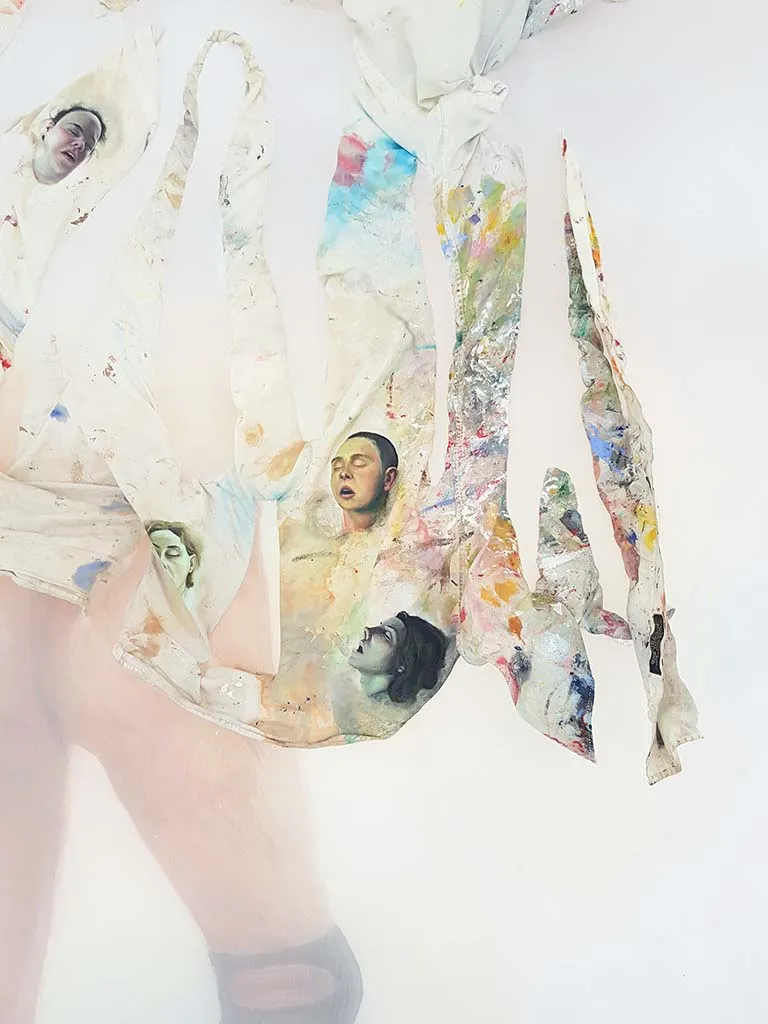
CHS: How does your painting practice inform the other mediums you work with?
MG: My work as a painter really got me into a specific way of reflecting and materializing thoughts. Similar to methods of improvisation, I think it is a way to work in layers, step by step, by accepting the unpredictable, finding ways to re-engage it and bounce off it towards the construction of a video, a text, etc. This practice also became naturally applicable to my everyday choices: how to embrace the unforeseen, always imagine other possibilities, combine unexpected elements, accepting to sacrifice, to fail and change my mind, invent new paths towards an indescribable goal. This is a very exciting way of moving through life in general!
CHS: You participated in our funded residency back in 2014, and we have been lucky to have you teach with us during our summer program for the last three years. You’ve returned several times for shorter residencies as well. How has this relationship with Cow House informed your work and professional pursuits?
MG: The 2014 residency had been a beautiful experience for me, socially and professionally. I met artists from Ireland, UK, Korea, and the US with whom we shared great artistic discussions in the Cow House’s well-known, very warm atmosphere. We had absolutely all the comfort needed, timewise, financially, and of course, the amazing setting of the environment, the people, and the studios to do both research and production. It also came in for me at a crucial time in my career (about a year after graduating) when I didn’t yet have much experience and really needed this kind of establishment to trust me on my ambitions and get started! I ended up sharing a studio with Joey Bryniarska, the British artist, in London, for a year. The next summer, on the advice of Emma Schwartz, the American artist, I did the Skowhegan art residency in Maine. Of course, I was very lucky to come back regularly to Cow House for teaching during the Summer programs along with Irish artists Paul Gaffney and Laura Fitzgerald. I’m very happy to reconnect with them regularly. Thanks to this extremely rich experience, I just got a job as the painting teacher in the school of fine arts in TALM-le Mans, for the BA and MA programs.
CHS: It’s been quite a year. How have you been spending your time?
MG: Very strange indeed; I feel like time has both expanded and shrunk at the same time!
I was very lucky to be in an artist residency at Le Parc Saint-Léger art center, in the French countryside, throughout the first lockdown. It was a very creative moment and a great opportunity to reconnect with essential things of life such as cooking, walking a lot, and being bored. But this was also coincidently a very busy year for me, with two shows to prepare and this new teaching job, so I have been working a lot. I just recently feel a terrific need to be in the crowd again and dancing!
